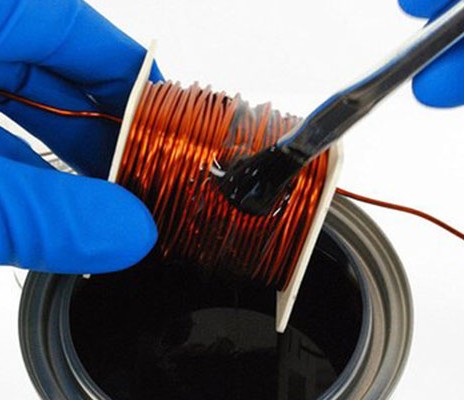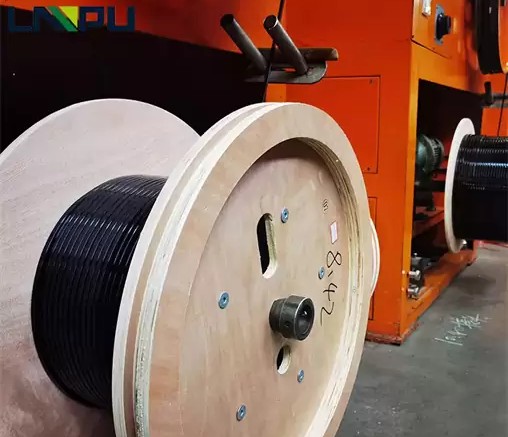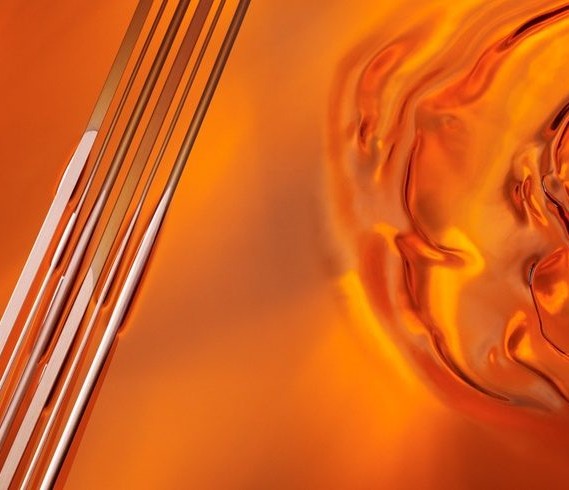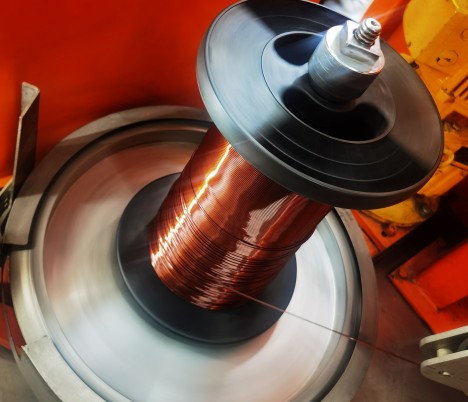Introduction to Polyvinylformal Enamels
Thermal Index: 120
Chemical Basis: Polyvinylformal, 2-Component
This is a polyvinylformal enamel for general purpose, made of high performance polyvinylformal resins and other resins. It’s intended for rectangular and large round wire manufacturing, suitable for transformer wires. With very good flexibility and adhesion. Compared with regular polyvinylformals, its thermal properties are better.
Polyvinyl Formal – superior resistance to transformer oils
Polyvinyl Formal is a chief ingredient in PVA based wire enamels. Enamel coatings have excellent resistance to transformer oil and provide outstanding toughness, flexibility and abrasion resistance, is also used with phenolic and other resins in adhesives and surface coatings.
This material is available in four grades having different molecular weights and different viscosities to suit various end usages. It is highly versatile and good resistance to chemicals and excellent mechanical, thermal and electrical properties.

Synthesis
Industrially, polyvinyl alcohol is produced by dissolving polyvinyl alcohol in water to obtain an aqueous solution of about 15%, passing through a spinneret with an aperture of about 0.07 mm, and making fibers in a saturated sodium sulfate aqueous solution coagulation bath, and then stretching and drying. Heat treatment to improve strength and hot water resistance; then, in the presence of catalyst sulfuric acid, carry out acetalization reaction with formaldehyde at a temperature of about 70°C for 20 to 30 minutes, wash with water and oil to obtain vinylon fiber. Vinylon fibers include staple fibers, tows and filaments, among which cotton-type staple fibers and tows are the most common.
The relative density of vinylon fiber is 1.26-1.30, the softening point is 220-230°C, and the softening point in water is 110°C; the fineness of cotton-type staple fiber is 1.4 denier (1 gram of mass is 1 denier for a fixed length of 9000 meters); the dry and wet strength are 5.4 grams force respectively /denier, 4.3 grams force/denier, dry and wet elongation are 16.5%, 17.5% respectively, Young’s modulus 550 kgf/mm, elastic recovery rate (3%) 70%. The characteristics of vinylon fiber are high strength, good toughness, wear resistance, acid and alkali resistance, high wet strength, not afraid of mould, etc.; the disadvantage is poor elasticity, dyeability and dimensional stability. Vinylon fiber is mainly used to make clothes, and can also be used to make various cables, canvas, agricultural windproof, cold-proof gauze, etc.

Property
Abbreviated as PVDF. A polymer compound formed by the action of polyvinyl alcohol and formaldehyde. Microstrip straw yellow solid. It is thermoplastic. Density 1.2. The softening point is about 190°C. The heat distortion temperature is 65~75℃. Water absorption is about 1%. Soluble in acetone, chlorinated hydrocarbons, acetic acid, phenols. It is mainly used in the manufacture of wear-resistant high-strength enameled wire coatings and adhesives between metal, wood, rubber, and glass laminated plastics, as an intermediate layer of laminated plastics, and in the manufacture of foamed plastics with high impact strength and large compressive modulus of elasticity.
It is a synthetic fiber made by dissolving polyvinyl alcohol in water, spinning and formaldehyde treatment. The Chinese trade name of polyvinyl formal fiber, also known as Vinylon. In 1924, polyvinyl alcohol was synthesized by German P.H. Hermann and Heinel, and it was made into fiber in the 1930s, named synthofil. Because it is soluble in water and cannot be used as textile fiber, it is mainly used as surgical suture. In 1939, Japanese Sakurada Ichiro and others successfully developed the heat treatment and acetalization method of polyvinyl alcohol, and vinylon became a fiber with good hot water resistance. The countries that produce vinylon in the world mainly include China, Japan, North Korea and so on. Vinylon has similar properties to cotton, but is superior in strength and abrasion resistance to cotton. It has good durability, moisture absorption, warmth retention, abrasion resistance and sunlight resistance; the main disadvantages are poor hot water resistance, poor elasticity, poor dyeability, and low mechanical properties at high temperatures. Vinylon is widely used for blending with cotton, viscose fiber or other fibers, and can also be purely spun to make outerwear, singlets, cotton sweaters, sweaters, and work clothes; it can also be used to make canvas, cables, fishing nets, and packaging materials and filter material.

Application
The properties and uses of polyvinyl formal vary greatly depending on the raw material, manufacturing method and degree of acetalization of polyvinyl alcohol. The most important industrial use is to make vinylon fiber.
Vinylon fiber is synthesized from completely alcoholyzed polyvinyl alcohol, and its average degree of polymerization is 1700-1800. In 1924, German W.O. Hermann and W. Heinel first produced polyvinyl alcohol, and in 1934, Germany produced water-soluble In 1938, Ichiro Sakurada of Japan successfully researched heat treatment and acetalization technology, which improved the water resistance of the fiber and expanded the scope of application in the textile industry. Vinylon fiber came out in 1948, and the first production device was built in Japan in 1950, and the output has risen rapidly since then. In addition to being used for vinylon fiber, polyvinyl formal can also be used as foaming agent, abrasive material, adhesive, electrical insulation material for enameled wire, etc.
Used to prepare phenolic-acetal adhesives, such as iron anchor 20l, 202, 203 adhesives.
Mainly used in the manufacture of wear-resistant high-strength enamel wire coatings and adhesives between metals, wood, rubber, glass laminated plastics, etc.
It can be purely spun or blended with various fibers to be processed into clothing, industrial canvas, ropes, etc.

